Are you someone who frequently travels via plane? If so, you should know a few things about airports and traveling that can make your experience much smoother. This post will share tips and tricks to help you navigate the airport like a pro. Keep reading for more information!
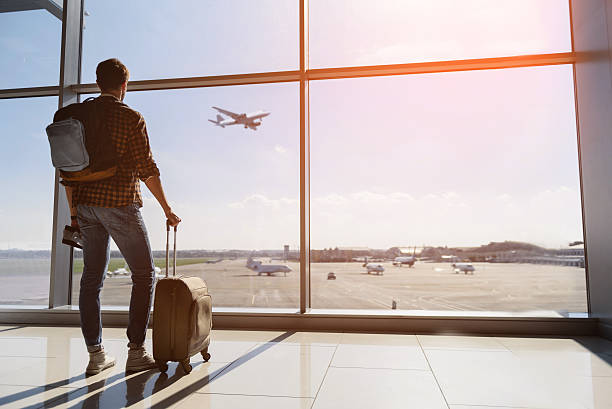
Find the best fares by booking your flights on a Tuesday or Wednesday.
- Pros: Save an average of $73 on tickets
- What you need: A computer/phone
According to a survey by budget airline CheapAir, Tuesdays and Wednesdays are the best days to purchase plane tickets. When you purchased your plane tickets on Tuesdays and Wednesdays, you saved an average of $73. Thursdays and Fridays were the best deals for air travel. Booking and flying on a Sunday was the worst option since it was more costly to leave on a Monday. However, according to CheapAir, the ideal times to book a flight are in January and February.

Get your boarding card and airport directions in the comfort of your own home by downloading or printing them now.
- Pros: Helps save unnecessary hassle and delay.
- What you need: Printer.
Plan ahead by printing your boarding pass and airport map from your computer. If you have a printer at home, you may skip the line during check-in. For example, if you’re flying Southwest, checking in early may improve your boarding position. To save time at the airport, you may bypass the kiosk queue and go right to the baggage claim area. If you’re visiting a busy airport like LAX or ATL—two of the most confusing airports in the world, according to TravelTrivia—you may also want to print out an airport map.
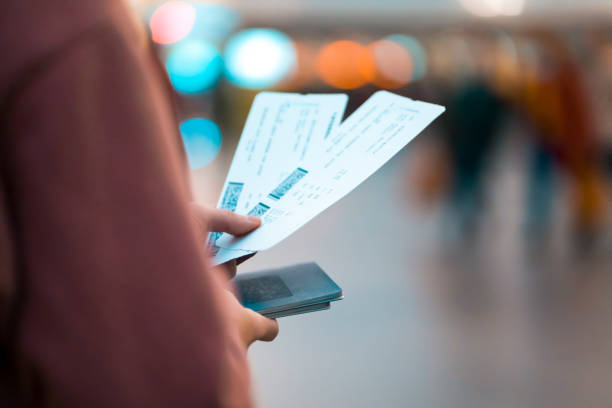
Pack all your liquids and electronics on top of your carry-on.
- Pros: Avoid wasting time in line without having to rummage through your stuff.
- What you need: Nothing.
The Transportation Security Administration (TSA) has a gazillion laws regarding what you can and can’t bring on a flight, and even when you are permitted to bring something, it still needs to be checked. There is no escaping the reality that this is the case. Keep your beverages and gadgets close to the top of your carry-on for convenience. If you need to remove them to pass through security, you may do so quickly if you keep them in a pocket or purse. You won’t have to rummage through your purse to locate them, causing a bottleneck and maybe frustrating the people waiting behind you in line.

Pack your essential belongings in your carry-on.
- Pros: If your bags are misplaced, you won’t be without the essentials.
- What you need: You should pack your carry-on.
This exploit has been around nearly as long as airlines have been missing people’s bags. Carry-on luggage should always include your most essential goods while traveling. This includes everything you regularly use, such as prescriptions, phone chargers, papers, undergarments, a change of underwear, a change of clothes, a toothbrush, toothpaste, and any valuables. If the airline misplaces your bags and you have to go through the hassle of retrieving them, at least you’ll have the necessities with you. Those who need to take medicine regularly would benefit significantly from this tip. Of course, sticking to your regular medical schedule without any deviations would be best.
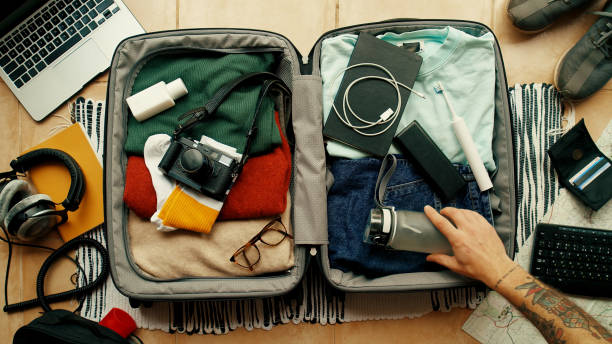
Invest in a portable weight checker to keep from paying extra for luggage that is too heavy.
- Pros: There are no penalties, such as fines or having to empty your bag in public.
- What you need: An easily transportable weight scale (Etekcity, $11.99 on Amazon)
Having your backpack confiscated because it’s too heavy is the most annoying thing. If you’re rolling or dragging a bag into the airport, you can typically estimate how near you’ll be to your terminal. It’s a nightmare when you don’t make it and are overweight. You will be charged an additional $1,000 and must remove goods from your shipment until you are under the allowed weight. Do yourself a favor and invest in a portable weight checker to avoid this bother. Make sure your bag doesn’t exceed the permitted size and weight when you check it at home. For frequent fliers, this is a purchase that serves a dual purpose.
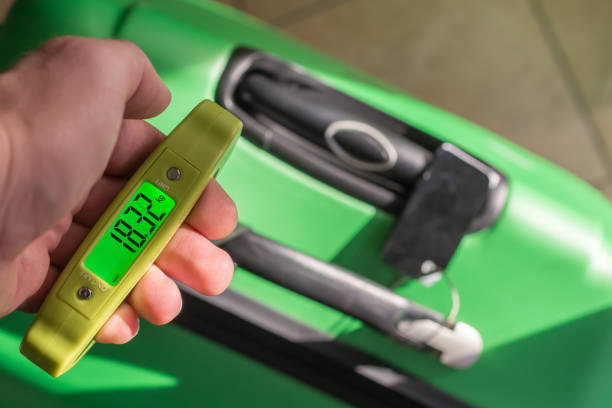
The TSA app may be used to check current wait times In the USA.
- Pros: Before heading to the airport, you may check wait times and get alerts about any breaking news.
- What you need: Access to a mobile device and the MyTSA app
When arriving at an airport and trying to estimate security wait times, most people simply cross their fingers and hope for the best. You can expect to wait if the queue seems to be very lengthy. If it does not, then you should rush over there. Get the TSA app so you can skip the security checkpoint lineups. The American Council for Technology named MyTSA the “Best Government Mobile App” in 2018. The app provides helpful information such as wait times, travel alerts and suggestions, and breaking news alerts. This software should be downloaded immediately by all regular fliers.

A day ticket may be purchased to access airport lounges.
- Pros: An upgrade in airport luxury is possible.
- What you need: Admission to the lounge.
Most of us don’t do much more than going to the airport, go through security, and board our plane. However, if you anticipate waiting at the airport for longer than expected, investing in an airport lounge pass might be a wise choice. Typically costing $40-$50 per person, access to airport lounges has been available for at least seven decades, with other locations charging as low as $20-$25. They have every amenity one might want, including T.V.s, sofas, seats, fast Internet access, and even baths. They may be booked either directly with the airline or via a third party like LoungeBuddy.
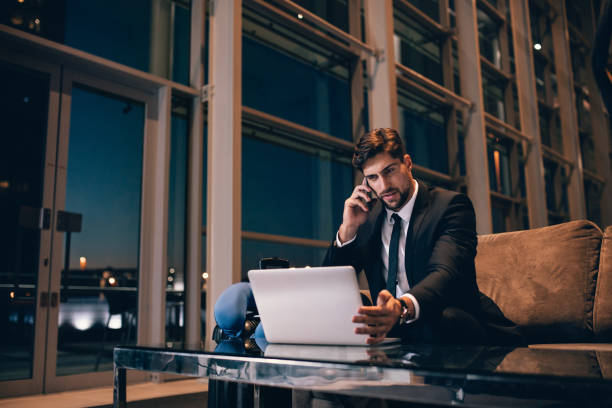
The security checkpoint is the time to start emptying your pockets.
- Pros: No delays occur when going through airport security.
- What you need: Nothing.
People who don’t empty their pockets before entering the screening line constitute a significant source of frustration for TSA workers. As you pass through security and the scanners, nothing can be in your pockets. The TSA will say this to you in the security queue, but some passengers will still not understand. A large particle of lint might trigger the scanner’s alarm. You won’t face any legal consequences for skipping the queue, but the TSA agents on duty will likely be frustrated by your disregard for their instructions. Finally, before entering the scanning line, please ensure that your pockets are empty.

Seat yourself at the front of the aircraft.
- Pros: If you’re sensitive to air travel, you may feel less nauseated or uncomfortable.
- What you need: Make set reservations ASAP
Seats closer to the front of the aircraft tend to have more legroom, according to SmarterTravel. We’ve calculated that our C.G. is around 28%, and our C.P. is about a quarter down the wing. So if you have motion sickness or are otherwise sensitive to flying, selecting a seat closer to the front of the plane is your best chance. An airplane has two more prime locations: the departure rows and the window seats. If you want to get off the plane fast, you should probably sit at the front door or in a window seat on an aisle. You may not have a window seat, but you won’t waste time in the air.
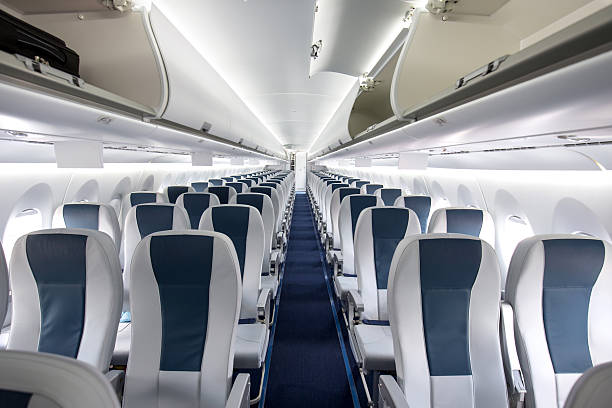
Pack a portable power strip.
- Pros: Every one of your electronic gadgets will be able to draw electricity.
- What you need: power strip.
Locating a working plug in the airport might be a challenge. And even if you do, you’re still limited to a single access point. Bring a power strip with you to the airport if you want to charge many devices at once, including your phone, AirPods, laptop, and tablet. The outlets may be shared with the individual sitting next to you if you’re feeling particularly giving. If the power strip is not battery-operated, you shouldn’t have too much trouble taking it through security. It won’t be a big deal even if you are pulled over; the worst that will happen is a brief holdup while they inspect your luggage.
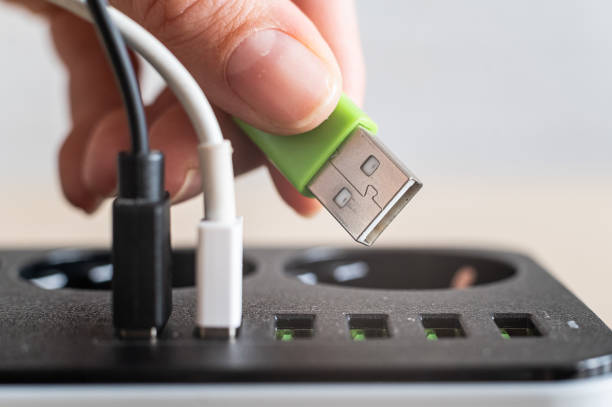
Avoid the lines and book your rental vehicle online.
- Pros: Enhanced accessibility and maybe reduced costs.
- What you need: Booking through phone or computer.
Automobile rentals are a common need for visitors to unfamiliar cities. The jet will get you there, but you’ll still have to figure out how to navigate after you land. Avoid the long wait by reserving a vehicle via the rental agency’s website. You may get greater availability and a discount if you pay in advance. In addition, there will be no need for you to wait. When you reserve a vehicle online, you have the added convenience of confirming that it meets your needs and budget. You won’t have to cross your fingers and hope you receive what you want, like a large enough automobile. Pre-book yours now to ensure its availability upon arrival.
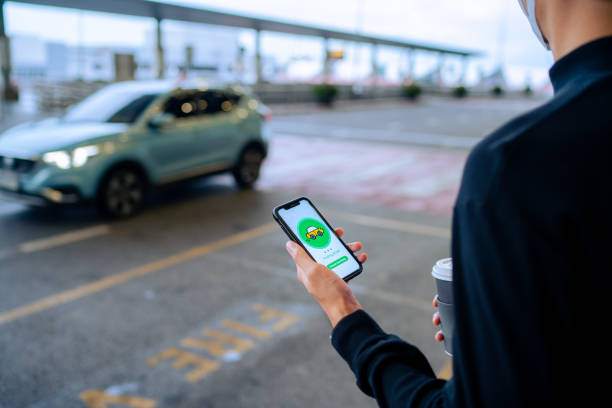
Make the change from contacts to glasses.
- Pros: Your eyes will not get dry throughout the journey.
- What you need: Glasses.
We contact lens wearers have all heard the horror tales of what happens when you travel with your lenses in. Controlling your eyes by dryness is a common side effect of traveling with contact lenses. Reduced atmospheric pressure, oxygen, and humidity at altitudes of 30,000 feet may cause your eyes to dry up and wreak havoc on your contact lenses. Stop wasting money on contact-safe eye drops if you don’t want to. Always wear glasses. Contact lens solution is not permitted in carry-on bags and must be packed in a checked bag. In contrast, your lenses may and should travel in your carry-on.

Compression socks may alleviate jet lag symptoms if worn for more than 5 hours.
- Pros: Don’t worry about poor circulation or swelling in your feet on lengthy trips.
- What you need: These are called compression socks.
This hack works for everyone, whether they have poor circulation or not. To have the energy level of someone just getting over the sickness is a testament to the difficulty of jet lag. Instead of medicine, try wearing compression socks. Compression socks stop blood from pooling in the foot and return it to the heart. Tightness of 30–40 mmHg is advised (extra firm). The danger of forming blood clots while flying rises in direct proportion to the duration of the journey, making this hack all the more crucial for lengthy flights. There isn’t a significant risk of swelling or anything worse, like deep vein thrombosis, but you should still take measures just in case.
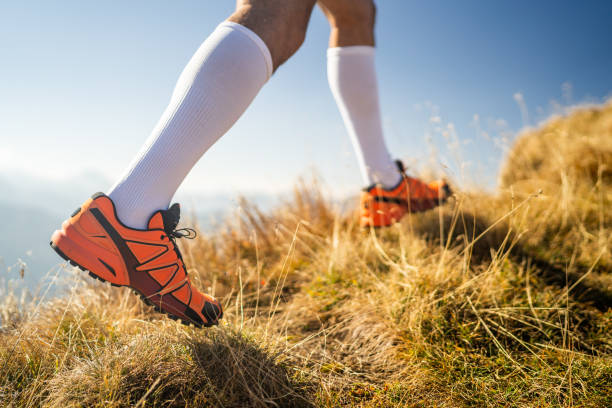
Don’t get on till the very end.
- Pros: Your wait time will be reduced due to the decreased crowd size.
- What you need: nothing.
It’s not the end of the world to board the aircraft last, as the travel hacking specialist The Points Guy argued convincingly. If your airline uses allocated seats, this trick is for you. Otherwise, boarding last will likely land you in a seat near the rear restrooms. TPG claims that by waiting to board until the very end, you may avoid the crowds at the jet bridge and gate. It’s a double win: you get some distance from other people and spend less time in the air, which is a boon for those who despise flying. In addition, when you board last, you save yourself fifteen to twenty minutes of waiting.

Book a Seat near the exit for more room.
- Pros: No children permitted, more leg room, and reclining options.
- What you need: Position near the exit; additional fees may apply.
A seat in the exit row may be the best option if you are tall and dislike sitting near little children. There is greater space between you and the seat in front of you, making these seat ideal for long-haul flights. The most legroom is found in the exit rows on long-haul planes. Seats in the second row towards the exit are very spacious and tilted upwards. The flight will be considerably more peaceful since children are not permitted to sit there. You should merely be ready to pitch in and assist whenever trouble arises. The flight attendant will ask you to confirm verbally that you are prepared for exit-row duties for safety reasons.

You should bring Snacks.
- Pros: In other words, you realize a financial gain.
- What you need: your food and drinks in your carry-on.
Airport food is too pricey. The markup is ridiculous, and you may spend three times as much for refreshments as you would at a regular store. Also, airports charge more for their services since they have more significant commercial running expenses. So they’re contributing to the high cost of food there. And what is it, exactly? Get some airport munchies before you go, but don’t rely on the airlines. Like a movie theatre, please. You may bring in your carry-on goods that are solid food. The scanners will let these goods through, but you may have to remove them from your carry-on bag. You will have to wait until you have through security to purchase a beverage.
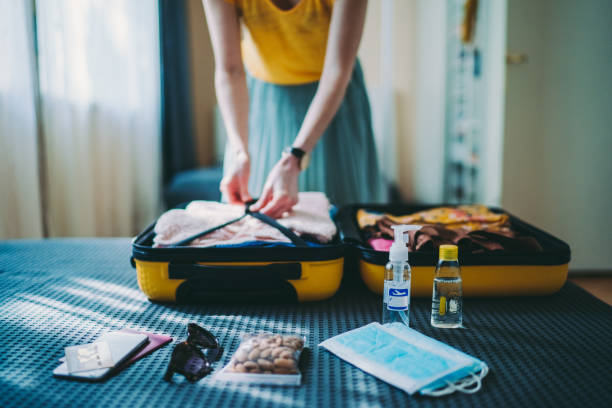
Stay grounded in the days leading up to significant holidays.
- Pros: There will be less of a crowd and cheaper tickets for those who want to travel.
- What you need: Nothing.
It’s rather apparent that this is the case. Everyone leaves the day before a big holiday, such as Christmas, Thanksgiving, Easter, or the Fourth of July. They want to reach their loved ones in time for the holiday celebration, but they don’t want to go too far in advance. As reported by APRFinder, the worst days to travel are December 23–26, November 25 (the day before Thanksgiving), July 3, May 22, and September 4. So think twice about booking a flight around certain times to avoid paying a premium and dealing with airport congestion.
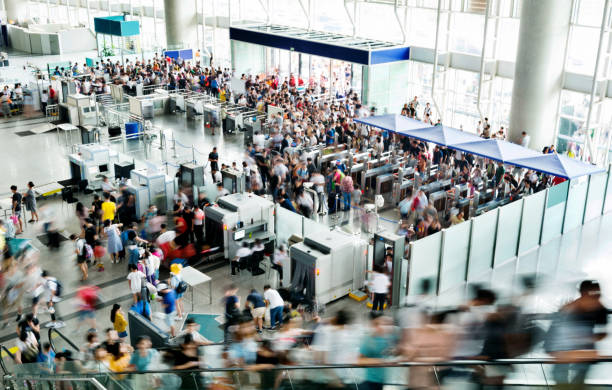
You can use the airport’s Wi-Fi for longer by resetting the rollback on your smartphone.
- Pros: Free Wi-Fi access is available to you.
- What you need: Only your phone is required.
Several airports provide free Wi-Fi with no time limits, but there are also plenty that do. If you go over your allotted Wi-Fi time, you’ll have to either pay for extra access or restart your device again. You can get around it by reversing the rollback on your gadget. Time is measured in Wi-Fi in the same way your device does. Avoid disconnecting from Wi-Fi by setting your device’s rollback backward before connecting. If you’re not willing to spend an astronomical sum or wait another hour, it’s worth a chance.

Any Alcohol Under 3oz Is Permitted.
- Pros: Allowing alcohol aboard flights.
- What you need: Mini alcoholic beverage bottles of 3 fluid ounces or fewer, packaged in a single 1-quart plastic zip-top bag.
But if you can’t help yourself, you may carry bottles of alcohol that are less than three ounces in size. The TSA does not let passengers bring in containers holding more than 3 ounces of liquid. Even though miniature liquor bottles may be found at almost any shop, they must be packed in a particular manner to meet TSA regulations. Mini bottles must be stored in a single, one-quart plastic bag. There must be a zipper on the top of the bag. These bags are sold at several retailers, including major retailers like Target, Walmart, Amazon, and even certain supermarket shops. The amount of alcohol you may carry with you is limited by the bag size you bring.
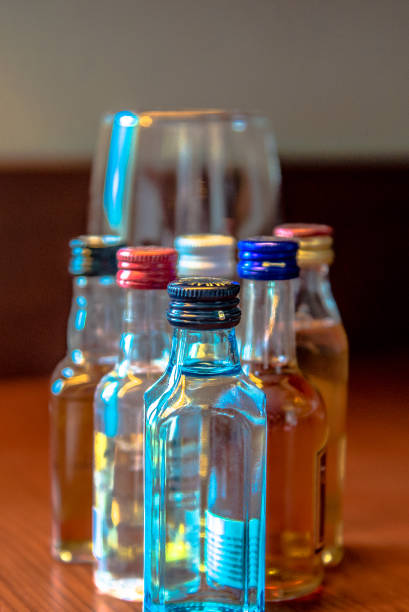
If you’re on a trip with kids, don’t forget the gum!
- Pros: Aids in clearing out youngsters’ ears.
- What you need: Hard candies and sugar-free gum.
While it’s true that whining children on planes might be a nuisance, they do have valid concerns. Takeoff and landing pressure variations may induce ear pain for certain people, and children are more susceptible than adults. The discomfort is unpleasant, but the pain only lasts for a short time. If your child has a cold or ear infection, you shouldn’t even try to take them on a plane. Instead, you could pack sugar-free gum or hard candy for the flight. During takeoff and landing, have your youngster (if they are old enough) eat the gum or suck on the sweets. As a result, your ear pressure should decrease. Ensure your kids drink plenty of water before, during, and after the trip to prevent fluid buildup in their ears.
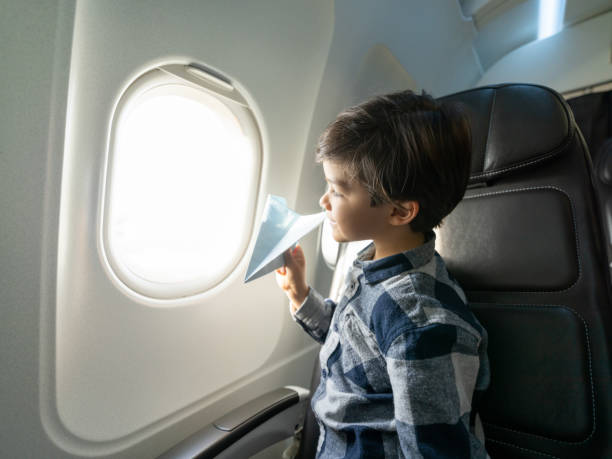
Don’t consume anything alcoholic before taking off.
- Pros: You won’t lose too many fluids and won’t become dehydrated.
- What you need: Nothing.
Although getting drunk on a plane is a quick and easy way to kill time, we can’t recommend doing so in excessive amounts. When on a lengthy trip, it’s particularly important to avoid alcohol, which may lead to dehydration. Alcohol is a diuretic, meaning it increases the pace at which the kidneys, bladder, and ureters flush extra water out of the body. Therefore, drinking alcohol on a flight might increase the risk of dehydration since you won’t be able to drink enough water to dilute it. In addition, you don’t want to get to your destination with a headache, disorientation, severe thirst, and dry mouth.

Wrap valuable jewelry in a plastic bag.
- Pros: Not at risk of losing anything, and less likely to have your luggage checked.
- What you need: plastic baggies of the quart size.
The Transportation Security Administration (TSA) recommends that any valuables be placed in a carry-on bag whenever possible. Both allow jewelry, but if your pieces are particularly emotional or expensive, you may want to keep them with you just in case (an all-too-common occurrence). Instead, get a transparent, one-quart Ziploc bag and put your jewels in it. This will simplify TSA to scan, reducing the likelihood of your suitcase being subject to a manual inspection. TSA recommends requesting a private search to avoid other passengers seeing your belongings.

Buy a universal adapter.
- Pros: Anywhere an electrical outlet is found, you may charge your electronic gadget.
- What you need: Universal adapter.
An airplane’s power outlet may differ from what you’re used to. How many prongs does the plug have, if any? A USB port you shouldn’t use due to the risk of hacking? And if not, what is it? Avoid the hassle of figuring out which adapter you need and instead get one that will work with everything. This ensures that you will always have access to power for your phone, tablet, computer, or another electronic device. A universal adaptor costs just $10–$15 on Amazon. For instance, the NEWVANGA International All-In-One Travel Adapter has 4,272 reviews and a 4.5-star average rating. So the price tag is just $11.99.
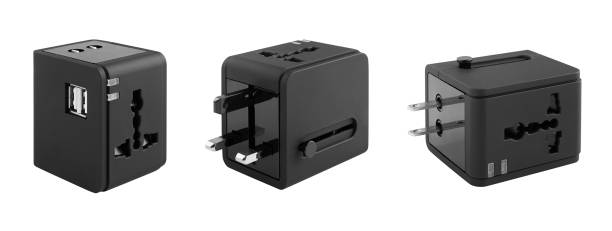
Get a taxi in the terminal’s departure area, not at the arrivals terminal.
- Pros: Getting a taxi from the terminal’s exit is more expedient.
- What you need: Get ridesharing with cash or a mobile phone.
The Los Angeles Times reports that there is up to 80% less congestion at the departures level (those leaving the airport) compared to the arrivals level (people flying in). This is particularly the case at major hubs like JFK and LAX. Catch a taxi at the airport’s departure level if you’re headed home. There are several scenarios where catching a taxi from the departure terminal might be more suitable than from the arrivals terminal. This is partly because passengers leaving the baggage area often cause road backups. If you’re on the departure side, your driver will almost shove you and your baggage out of the vehicle as it continues to move. You can quickly get a taxi, but you’ll need to move soon.

Protect your baggage from dings and scratches by wrapping it in shrink wrap.
- Pros: Your bag will retain its pristine condition without dings or scratches.
- What you need: Luggage cover or shrink wrap
There were reportedly 22 million cases of lost baggage in 2017, according to Luggage & Suitcase. This implies they returned to their owner broken, scratched, or otherwise not in the same state in which they departed. Shrink-wrapping your bags is a great way to keep them safe while traveling. Shrinkwrapping is permitted, and your luggage will make it past security without any problems. However, a baggage cover should be purchased if the hassle of using shrink wrap is too great. You can get a Yotako transparent PVC suitcase cover on Amazon for $16.99. Suitcase coverings may be purchased for about $10 to $20 and are well worth the investment if you care about your luggage’s appearance.

Put a FRAGILE label on your bag so it is unloaded first and loaded last.
- Pros: There’s a chance your suitcase may be prioritized and arrive at the airport faster than the others.
- What you need: A “FRAGILE” sticker from the front desk.
There’s always a potential that luggage handlers won’t see the sticker, so we can’t claim this is a definite thing. The other possibility is that even if they do notice, they won’t care and will continue tossing your belongings about carelessly. Nevertheless, it’s certainly worth a try. Baggage check should include “FRAGILE” stickers available at a kiosk near the desk, which you should affix to your bags. Obtain a sticker by requesting one if you cannot locate one. Technically, this implies that your luggage must be loaded and removed first, and the handlers must be gentle with it.
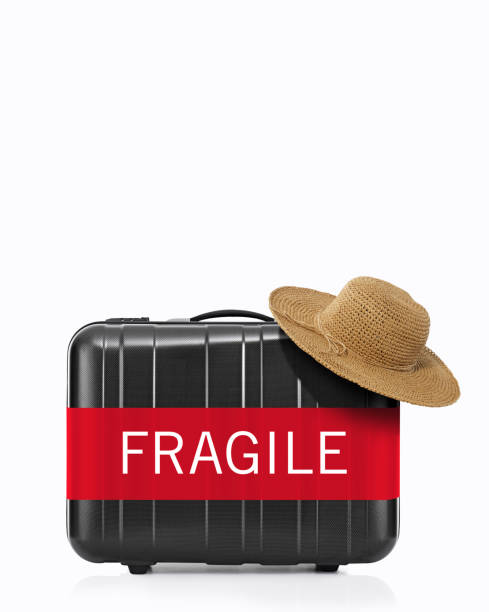
Guarantee that your bags can survive a fall of at least six feet before checking them in.
- Pros: There will be less harm to bags while they are being transported.
- What you need: Suitcases and bags that can withstand the elements from dependable manufacturers like Samsonite, Rimowa, and Pelican Elite.
There is another way to protect your bags from destruction besides shrink-wrapping them and affixing “FRAGILE” stickers on them, as we have discussed. You can always go out and purchase brand-new, ultra-durable baggage. Your bags will be safe in transit if they can survive a fall from a height of six feet. Expert World Travel named the Pelican Elite Luggage (“Best Durable,” $419), Samsonite Omni (“Great Budget Option,” $129), Samsonite Winfield 2 ($194, “Best Value”), and Rimowa Topas (“Best High End,” $1,499) as the most reliable suitcases for the upcoming year of 2021. Extra-durable baggage may cost you more upfront, but your belongings will be safe from anything except a nuclear bomb.

Cushion fragile goods by wrapping them in socks and clothing.
Pros: Is adept at stowing away fragile objects.
What you need: Hosiery and apparel, to be specific.
You suddenly remember that you forgot to pack anything on the morning of your departure. You’ve got a long journey ahead of you, and neither packing peanuts nor Styrofoam is available to protect your fragile belongings. You can do nothing to prevent your bags from being jostled and shoved about. Put your clean garments and socks to good use by wrapping fragile objects. For example, if you need to check a bag but can’t bring a fragile glass souvenir in your carry-on, you may always use a sock to protect it. Wrap the sock in t-shirts and other articles of clothing to protect it on the trip back home.

Don’t let others know if you’ve been given a free upgrade.
- Pros: Don’t worry; the airline won’t stop giving out free upgrades anytime soon.
- What you need: Nothing.
Whether it’s to a nicer hotel room or a seat in business class, a free upgrade is a blessing for travelers. Joining the airline’s frequent flyer program, using a knowledgeable travel agent, arriving at the airport early, offering to be removed from an overbooked aircraft, or even just asking at the counter may all result in free upgrades (the worst they can say is no). So keep your free upgrade to yourself if you can get one. However, don’t let it get out, as the airline may tighten up its ranks and become less willing to dole out free upgrades if too many individuals start taking advantage of loopholes in the system.
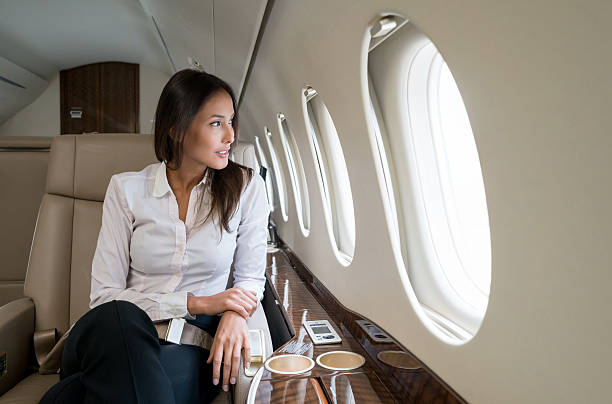
Use two separate wallets to keep your cash different from your identification and payment cards.
- Pros: If you lose your wallet, your belongings won’t magically disappear.
- What you need: There are two different wallets.
Check out what you have in your purse or wallet right now. It most likely contains your money, identification, and financial documents. If your wallet disappears, you will lose everything in it. In addition, losing your belongings might cause a great deal of worry and stress if you’re on the road. Split your cash across two different wallets. If one of them goes lost, you won’t be entirely out of luck thanks to this method of reducing risk. Yes, losing cash or cards/I.D. will be inconvenient, but you won’t lose both. You may maintain your current level of functioning until you choose your next course of action.
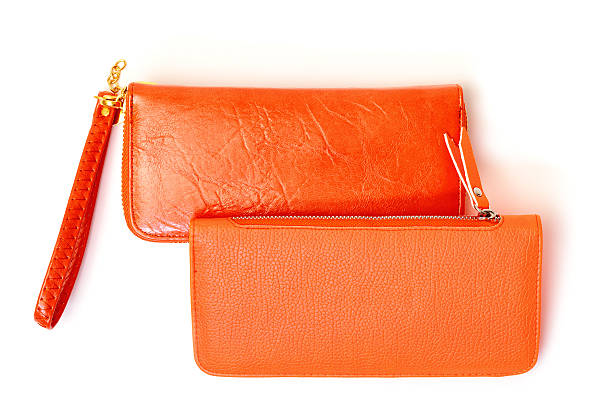
Put money in various hiding spots.
- Pros: If your bag is stolen, your cash won’t be completely exposed.
- What you need: Use a Pacsafe tote or some thread and fabric to make secret compartments in your bag.
Allianz Travel Insurance created this proposal for those traveling with a large sum of cash and needing to change it along the way. It doesn’t matter how little it may appear; bag slashers, pickpockets, and unethical bag handlers are always risky. If you need to bring cash with you on your trip, spread it out throughout several compartments of your luggage. A Pacsafe bag ($77 on Amazon) is an excellent choice for protecting your belongings when traveling abroad because of its steel wire straps, security hooks, and other integrated features. Cutting and sewing pockets onto your backpack can provide you with even more underground space. If you conceal your money carefully, the robbers won’t be able to obtain it all.
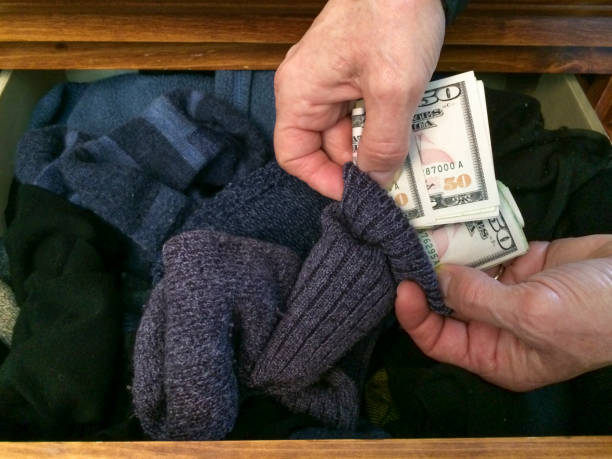
Make sure you don’t swap all of your money at once.
- Pros: As a result, you may avoid re-exchanging your cash reserve.
- What you need: Doing business with one’s own money.
It’s a standard component of any trip to change money. You should not go on vacation unless you have enough money to sustain yourself while away. Still, you shouldn’t swap all of your money at once. A modest emergency savings reserve in your native currency should be set up. If you don’t blow up your whole travel budget right once, you may avoid the hassle and potential loss of having to re-exchange your money when you get home. You should never go to several locations to exchange money, as stated by Investopedia. While local banks and ATMs often provide the most favorable conversion rates, airport kiosks and currency exchange stores have some of the worst. It’s also a good idea to ask whether your regular bank can reimburse you for any overseas ATM costs you may pay.
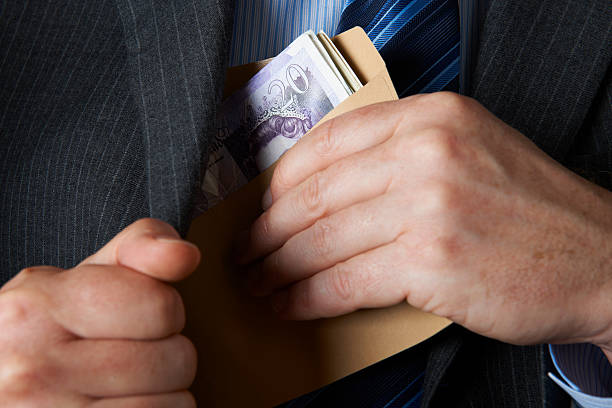
You should notify your bank that you will be away.
Pros: This instruction tells the bank not to freeze your card if you make a transaction while away.
What you need: Phone.
Even if you’re just venturing a few miles outside of town, you’ve probably experienced this. If your bank suspects fraud, they may immediately freeze your card. It’s nice to be reminded, but it’s not always required; just because you’re in a new place doesn’t indicate your credit card was taken. Call your bank ahead of time to be sure your card won’t be locked. Just let them know that you’ll be traveling and that they shouldn’t freeze your card because of a suspicious transaction made in a foreign country. Time and effort are both spared. If your card is lost or stolen while you’re away, give the bank a quick call, and they’ll cancel it for you.

Join a loyalty club that will reward your frequent flying.
- Pros: Rewards for frequent flyers may include lower ticket prices, better seats, and more luggage space.
- What you need: A method of joining and using the frequent flyer program.
Join a frequent flyer program if you go to the skies regularly. However, you won’t be able to reap the advantages until you often fly (at least 20,000 miles per year). When you sign up for a frequent flyer program, the airline will convert your miles flown into a point system. You may be eligible for a free upgrade, a discount on flight or baggage services, or even discounted fares in the future after reaching a particular point threshold. As a result, frequent fliers might save money in the long run by avoiding paying full fares on each of their many travels.

The moving sidewalks don’t get you anywhere quicker; they merely provide a resting spot.
- Pros: If you’re carrying many bags, take a break; those who use power walkers will get there much quicker.
- What you need: Nothing.
You won’t go anywhere quicker on a moving walkway unless you walk the whole time briskly. Most large airports have these moving walkways, and the belt runs at a speed of around 1.4 miles per hour, as reported by the Chicago Tribune. That’s far slower than a typical walking pace. People on the belt walk at a speed of 2.24 miles per hour, much slower than the average walking pace of 3 miles per hour. In conclusion, getting on a moving walkway does not automatically make you hyperdrive. Its only purpose is to provide a place to sit for travelers lugging around large suitcases. When strolling, do so on the left. Stand to the right if you must stand.

Take advantage of the time away from your screen and disconnect from technology while in flight.
- Pros: capable of disconnecting from social media for a few hours at a time.
- What you need: In other words, nothing (and that’s the purpose!).
Social media is relatively young compared to other forms of media and communication. Since social networking is still in its infancy, little is known about its long-term effects. Some research suggests that it’s dangerous and that we should periodically “detox” from it, while others suggest that it’s not as horrible as it’s made out to be. If you’re looking to disconnect from your digital life, there’s no better time to do it than on a flight. In-flight Wi-Fi is not worth the price. Try reading a book or listening to music instead (playlists may be downloaded in advance and played even without Internet access). Put aside the social media buzz for a while. When you get off the aircraft, you’ll feel revitalized.

Rip up airline ticket barcodes after each travel to protect your privacy.
- Pros: Secures sensitive data from unauthorized access.
- What you need: Scissors (if you wish to cut tickets up instead of shredding them) (if you want to cut tickets up instead of ripping them).
According to Clark.com, boarding cards include a wealth of data in their Q.R. and barcodes. Your future travel plans, personal information, and frequent flyer account data are all part of this. As a result, these barcodes include some extremely sensitive information, even if they don’t explicitly display your credit card number and security code. The same holds for ticket barcodes. Your travel tickets and boarding pass include sensitive information that hackers might steal, so be sure to destroy them after use. You may take off the barcode and retain the remainder of the ticket or pass for your scrapbook if you’d like.
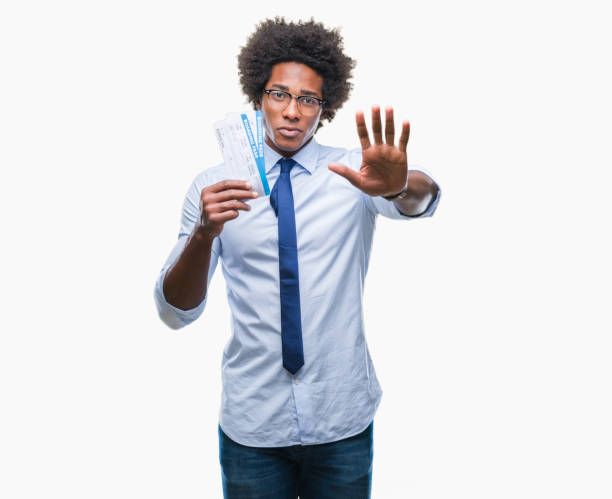
Essential medications should be in carry-on at all times.
- Pros: Your medicine will not be lost even if your checked luggage is misplaced.
- What you need: Essential medications for daily use.
The potential for misplaced luggage after being checked has been a frequent topic of discussion. According to USA Today, the chances of losing your luggage are fewer than 1%, but that’s still a bit unsettling when you think about all the valuables you have packed. Make sure to include any necessary medications in your carry-on. That way, you can take care of your health no matter where your travels take you without worrying about whether or not your checked luggage will arrive safely. It is legal to bring any number of medicines with you on an airplane, and the TSA promotes doing so. In addition, you can take “unlimited quantities” of your medication so long as it all passes via the scanner.

Get Google Maps on your computer for when you’re not connected.
- Pros: Accesses content even when you’re not connected to the internet.
- What you need: iPhone or iPad.
Wi-Fi on planes is often unreliable, and you shouldn’t leave your phone’s data connection on to avoid extra roaming fees. A map application like Google Maps may be downloaded for easy access. Then you can traverse the world even when you’re not connected to the internet. Start by launching Google Maps on your iOS device. Make sure you have an active Internet connection before beginning a download. Enter the address of the location you’re looking for at the bottom of the search results page. The map may be downloaded for offline viewing. Click it To continue with offline navigation.
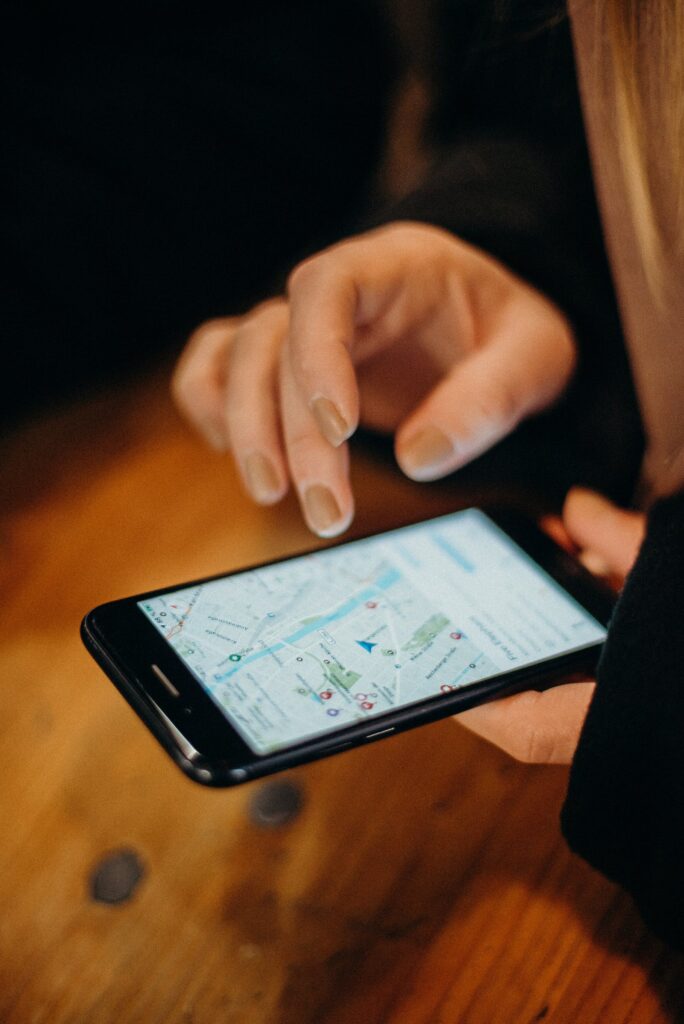
Do some exercise to combat jet lag.
- Pros: Aids in re-establishing a healthy rhythm inside the body.
- What you need: Weights (optional) (optional).
Getting over jet lag may be challenging. However, there are plenty of resources online to help you establish a healthy sleeping routine again, and we’ve got one more for you. Exercising is a great way to combat jet lag. Research published in the Journal of Physiology suggests that exercising at different times of the day might alter your natural sleep-wake cycles. Take a brisk twenty- to thirty-minute stroll after you’ve reached your destination. You might choose to finish up with some light weights or calisthenics. This may help you delay bedtime.
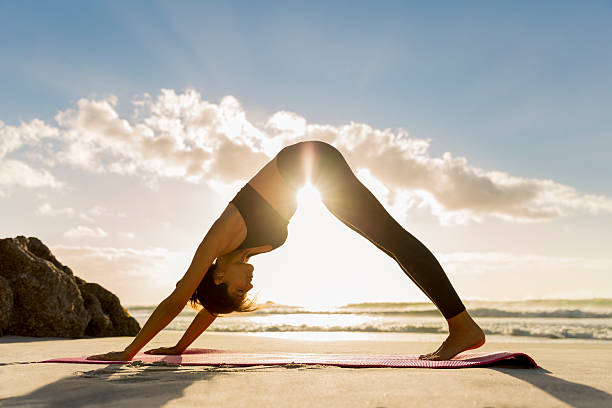
SeatGuru’s seat maps can find the ideal seat on every flight.
Pros: Provides details on airplane comforts, including the best and worst seats to request.
What you need: Use a computer or mobile phone to get online.
Anyone who has traveled knows how crucial it is to choose a seat on the plane. SeatGuru is useful whether you have a reserved seat or are given one randomly. Aircraft seating charts, passenger reviews, and a technique for quickly distinguishing between excellent and terrible airline seats are all available on this site. You may also find helpful information on airlines, in-flight services, and other travel-related topics. SeatGuru’s primary function is to provide comprehensive data aggregation and comparison platform. It has existed for over two decades and is now owned by TripAdvisor. It can help you choose your seat and determine which flight times and airlines are best for you.
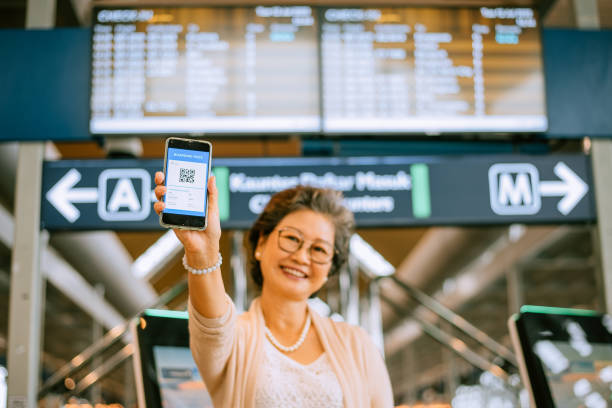
If your flight has been delayed or canceled, use AirHelp to receive compensation.
- Pros: Assists with claims and protects airline passengers’ rights.
- What you need: AirHelp availability.
Having your flight delayed or canceled is one of the worst experiences imaginable. The original AirHelp founders had had enough of the industry’s lack of accountability and established their claims-handling firm. When airlines delay or cancel flights, AirHelp Ltd. steps in to ensure passengers are compensated for their trouble. AirHelp will pursue reimbursement on your behalf if your flight is canceled or delayed. AirHelp publishes yearly rankings of airlines and airports, providing an incentive for airlines to work with them. These rankings mean a lot to travelers. Therefore it’s in the airlines’ best interest to maintain a high standing with AirHelp. If your flight is unexpectedly delayed or canceled without any financial compensation, our service is here to help.
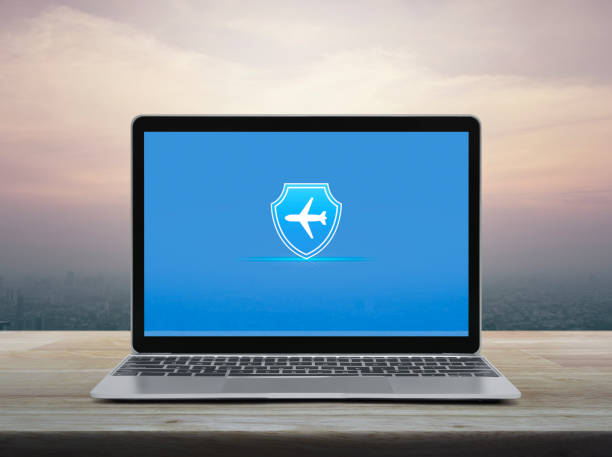
A “special dinner” will guarantee that your food is served before the regular customers.
- Pros: You’re served before everyone else.
- What you need: Rewards account (sometimes).
This cheat works well if you don’t mind manipulating the system. United is an excellent illustration of the concept of a special meal order. In-flight meals that meet specific dietary needs are called “special meals.” Special meals include kosher meals because of their preparation requirements. If you ask for anything “special,” you’ll receive it before anybody else. Some airlines, like United, only provide these meals on select itineraries, and you must request them after booking the flight. You may also require a rewards account with the airline, such as MileagePlus. Think about employing this trick if time is of the essence and you need your supper quickly.
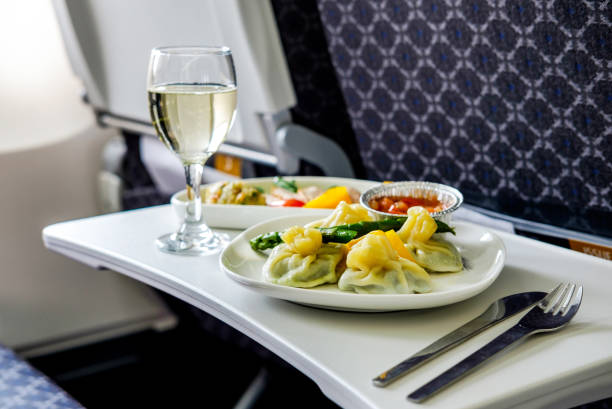
A travel credit card is a must.
Pros: Puts away cash and earns bonuses for spending it.
What you need: A credit card specifically designed for use on vacation.
A travel credit card might be helpful if you travel regularly. If you often travel, using a credit card offering mileage-based rewards might add significant cost savings. CNBC recommends the American Express Gold Card, the Capital One Savor Cash Rewards Credit Card, the Capital One VentureOne Rewards Credit Card, and the Chase Sapphire Reserve as some of the top travel credit cards. CNBC investigated the money-saving potential of these cards and found surprising outcomes. For example, after five years of using the Chase Sapphire Reserve credit card, the expected yearly rewards were $3,346. Though it may test your patience, the time spent will be well worth the money you save.
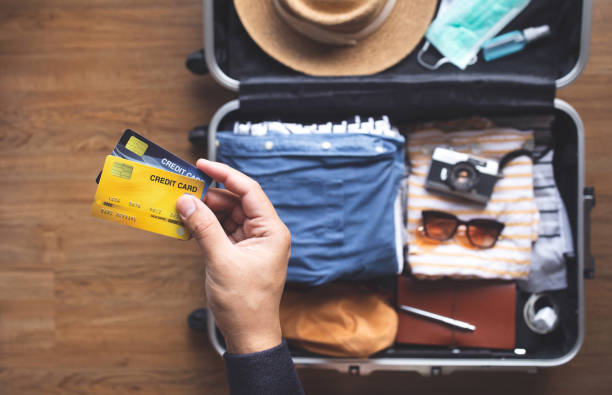
When traveling for extended periods, it is recommended that you take a fluid booster.
- Pros: It helps you stay hydrated throughout those long trips!
- What you need: Increased capacity to absorb water.
Long flights provide a significant risk of dehydration. It’s easy to become dehydrated on a sixteen- or eighteen-hour flight. Since you aren’t moving around or doing anything, you aren’t likely to be concerned about dehydration. However, if you haven’t had anything to drink in a while, you could feel dizzy when you finally get up. Therefore, bring a hydration multiplier on lengthy flights. For instance, this supplement is represented by liquid I.V. ($24.47). The co-transport of sodium and glucose through the belly, drawing water with it, is exploited by hydration multiplier packets to enhance water intake. This leads to improved hydration, even throughout a lengthy journey.
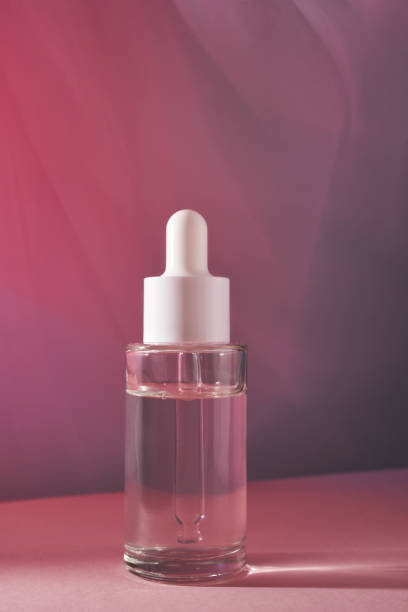
Requesting a complimentary upgrade is quite acceptable.
- Pros: A better seat may become available to you.
- What you need: Have faith in yourself.
We’re making a huge mistake since most people are too friendly to ask for anything for free. It’s a dog-eat-dog world out there, so if making your special event known would garner you preferential treatment, by all means, do so. It’s not uncommon for airlines like United to provide complimentary upgrades to their customers. Of course, this isn’t always the case, but you’ll never know if you don’t try.
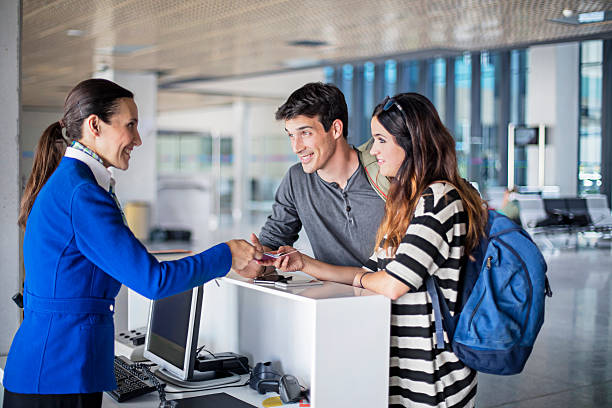
Book a flight in the wee hours of the morning if you’re afraid of flying in turbulent weather.
- Pros: An flight with less stress.
- What you need: Leaving first thing in the morning.
Everyone agrees that turbulence is the worst aspect of flying. A trip that keeps you on the edge of your seat for hours isn’t healthy for your nerves. It’s not always possible to prevent, but there are steps you may take to minimize your odds. Since most turbulent air is experienced in the afternoon, flying early in the morning may result in a more tranquil trip. While it can’t guarantee that you’ll be able to watch your downloaded Netflix movie uninterrupted, it should reduce the likelihood that anything terrible will occur.

Don’t forget to check in online at least 24 hours before your journey.
- Pros: You won’t have to wait in line for check-in.
- What you need: In-app registration is available.
There was a time when there was no such thing as online check-in. However, the miracles of today’s technology mean that this convenience is now the norm on almost every airline. Until 24 hours before takeoff, you may use the web check-in system. Then, instead of waiting in line to have someone else print your electronic boarding permit, you may go right past the checkpoint. This is one of the best benefits of the internet, and there are many. That thing is a miracle of contemporary technology.
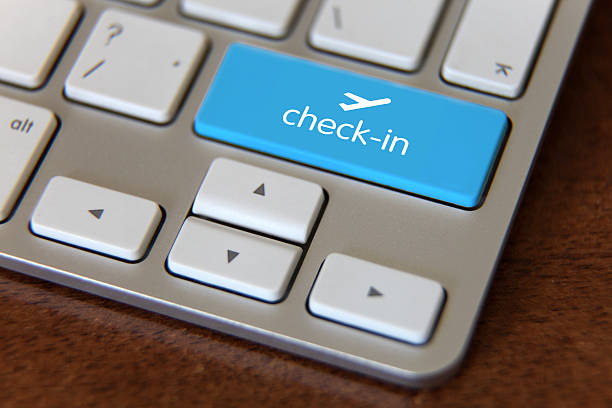
Snap a pic of your bags before you check them in.
- Pros: Better identifiable upon arrival at the airport.
- What you need: A mobile phone with a built-in camera.
It’s not hard to find someone else with the same bag you have while traveling. Making your baggage stand out can help you find it faster. It’s still a good idea to get out your phone and snap a quick photo before inspecting it. You may then use the image as a visual aid at baggage claim to ensure that you are retrieving the correct bag. Someone else may have purchased the same one from Target, so don’t assume you know for sure which one is yours. It’s wiser to play it safe than to end up embarrassed.

You should take an overnight flight.
- Pros: Calm and privacy.
- What you need: Overnight flight
Taking a red-eye flight is not something that many people actively seek out. However, if you want to avoid the hustle and bustle of the airport and get some rest before your flight, it makes sense to book a flight that departs late at night and arrives early in the morning. The trip will be over as soon as you put down your Amazon Kindle and go to sleep; you’ll already be there when you awake. The red-eye may not be for everyone, but it’s a good choice if you’re looking for some peaceful time.
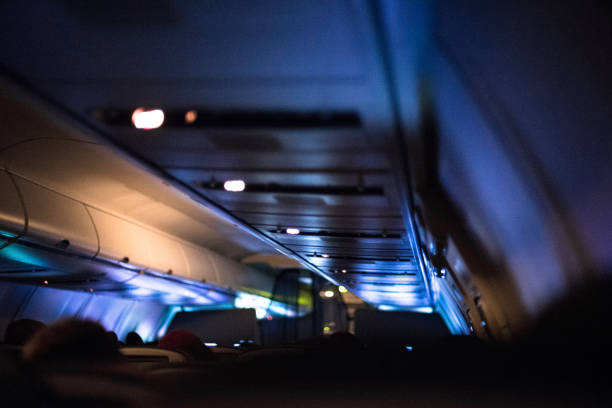
Please bring an empty water bottle.
- Pros: All the water you can drink is in the house.
- What you need: The water bottle was empty.
Customers buying food and drink while waiting for planes is a significant source of airport revenue. If you usually have to purchase water when you check in, save yourself the money and skip it this time. After passing through security, fill up your empty water bottle. You can get as much water as possible without breaking the bank. This little trick may not seem like much now, but it will save you a lot of money and pain in the long term.

Find out in advance where to eat and buy at the airport.
- Pros: As a result, you’ll have everything in order.
- What you need: What you need is access to the internet and a sharp sense of direction.
It’s simple to forget about food in preparation for a trip and assume you can grab some grub when you land. However, not all airports offer plentiful dining and shopping options. Fast food joints have been more prevalent in recent years, and their dominance in many areas has led to a general decline in the quality of available dining options. Don’t risk your health on an uninformed guess; do some research first. Instead of being rushed and purchasing something you don’t want because you don’t know what’s available, you’ll have time to prepare and browse the menu before you even get there if you know what to expect.
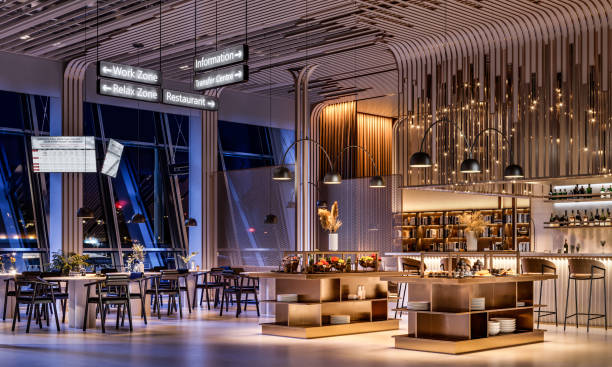
Don’t forget to stock up on travel toiletries.
- Pros: There is no need to acquire a little version for travel.
- What you need: Amenities found at a hotel.
Checking into a hotel may be entertaining for many reasons, Room service, blackout curtains, and fluffy pillows. We like the variety of helpful toiletries that are often provided. Those are yours to keep regardless of whether or not you intend to use them on the trip. You may save a lot of money on future purchases of travel-sized toiletries if you stock up on them now from businesses like Hilton. You could use a few pieces from your collection instead of running out to the shop and buying some for a few bucks.

Relax with a Nap at the Terminal.
- Pros: There will have a revitalizing effect on you.
- What you need: A peaceful chamber/sleep nook.
Sometimes it’s hard to keep your cool when your flight is delayed. Taking a sleep is, in fact, your greatest bet. While sleeping on an airplane’s hard seats isn’t always possible, some airports provide rentable sleeping pods. Airports in the United Kingdom include London’s Heathrow. A private pod for four hours will cost you around $60. Not only that but the use of showers and towels is included. If you do this, you can be confident that your time at the airport will be much enhanced. Waiting is the worst when you’re already exhausted.

If you don’t want to risk forgetting where you parked, snap a snapshot of your spot.
- Pros: There is no way you could ever get lost again.
- What you need: A mobile phone with a built-in camera.
Someone once said that the finest things in life are free, suggesting they may have been correct. Unfortunately, even in the best of circumstances, finding a parking spot at the airport is a hassle. It may be challenging to find parking, but if you do, don’t simply leave your vehicle there and leave town. Instead, you should probably snap a snapshot of the area to find it again later. It’s possible you won’t keep it in mind after the trip is finished, even if you believe you would. However, you can quickly locate the scene with photographs or other visual proof of its location.

Clothes may be rolled to take up less room in a bag.
- Pros: It creates additional room in your baggage by decreasing the volume occupied by your clothing.
- What you need: Nothing.
Yes, time to put away my belongings. Packaging for an extended trip all at once might be a major hassle. Many of us tend to overpack, while others tend to leave things home. Truthfully, it’s better to overpack than to run out of something essential. Try this innovative method of folding clothing if you need to pack light. Roll your clothes tightly instead of folding them to save space. Clothes won’t be creased any more than usual this way, and the packing space saved is noticeable.

Don’t forget to include a dryer sheet.
- Pros: Leaves luggage smelling clean and fresh.
- What you need: Sheets for the clothes dryer.
Dryer sheets are pretty versatile and may be used for various laundry-related tasks. These handy slips have a pleasant scent and may restore the original cleanliness of stored garments. Of course, you would be lost without them in your daily washing, but these sheets have many more uses. You can keep your clothing smelling fresh on the road by stowing a dryer sheet (or many) in your bag. Put them down anywhere you’d like, close the luggage, and get ready to go. As a result, your garments will have a wonderful aroma when you finally get to your location. Dryer sheets may be rolled up and inserted inside shoes if desired.

Make a digital copy of your passport and send it to your email address.
- Pros: You will have a duplicate passport in your possession.
- You need a scanner, an electronic device (phone or computer), and electronic mail account.
Worrying about compromising your overseas vacation plans is natural as misplacing your passport. You’ve double-checked your stuff a thousand times. This tweak will allow you to rest easier. You may quickly scan your passport using a home printer and then send yourself or the receiver an electronic copy. Don’t include it in the message body if you care about privacy. Instead, you should attach the photo to a separate message. Other methods of keeping your data safe are to filter out irrelevant information, password-protect your files, use end-to-end encryption, or use a cloud-based file storage service.

Prepare for long flights and downtime by downloading plenty of shows and movies.
- Pros: It helps you avoid spending too much on the airplane’s internet and provides entertainment, so you’re not stuck choosing from a limited movie library.
- What you need: In other words, you’ll need a streaming service account and a gadget.
The majority of in-flight entertainment options are subpar. It’s possible you won’t like any of the movies available via the in-flight movie program. There are Hollywood hits, but what if you’re looking for something more independent? Or maybe a whole new film? Fortunately, services like Netflix, Hulu, and others in the streaming media space have provided a solution. On these services, you may save material for offline viewing later. You can avoid spending extra on in-flight Wi-Fi since you won’t need an Internet connection to view them. It’s recommended that you conduct the movie downloads at home since the procedure might take some time.
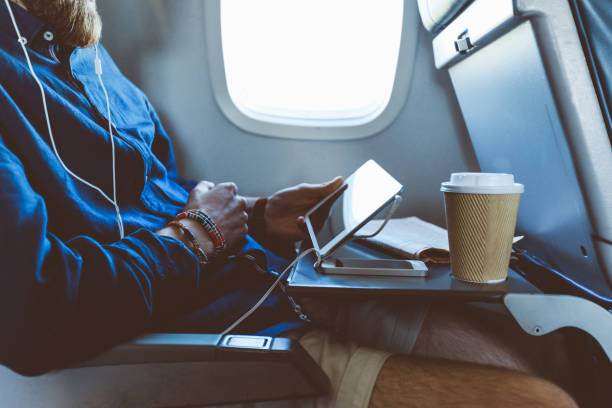
Put the bulk of your belongings near the suitcase’s wheels.
- Pros: The luggage won’t topple over if it becomes too heavy on top.
- What you need: You have some heavy baggage.
A “perfectly packed” luggage is the goal, and Consumer Reports has the most acceptable advice on how to achieve it. They suggested putting the bulk of your belongings in the center of the luggage, away from the wheels. So your bag won’t topple over and get stuck on the floor or drag to the ground under its weight. Heavy goods (not only shoes or a book) should be packed in the center, with lighter, more easily moved stuff on the bottom and wheels end. Making sure heavier items are centered in your luggage prevents it from tipping over on the baggage carousel.
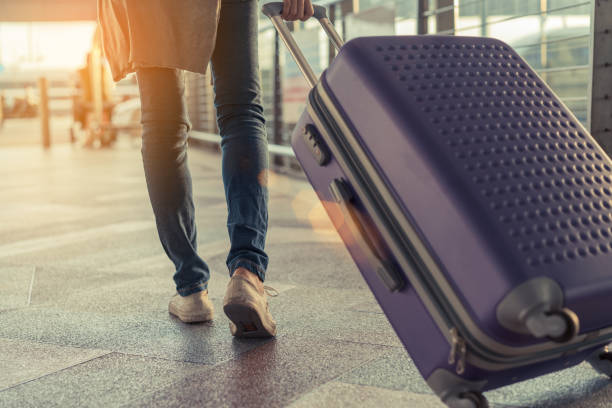
On an aircraft, it’s best to pass on fizzy beverages.
- Pros: Flight attendants will appreciate it; you won’t have gas or feel sick.
- What you need: Choose water or juice over pop.
In-flight refreshments should be limited to water and juice rather than fizzy drinks. Although the carbonation in soft drinks such as Coke and Sprite is enjoyable at first, it often ends up being more of a hindrance than a benefit. For example, an article today claims that fizzy drinks cause more gas in the digestive tract. As a result of the drop in barometric pressure, intestinal gas has already grown by as much as 30%. Carbonated drinks might exacerbate the symptoms of gas and nausea caused by this. In addition, the pressurization within the cabin causes Diet Coke to froth up every time the flight attendant tries to serve it, so they don’t like it when passengers request it.
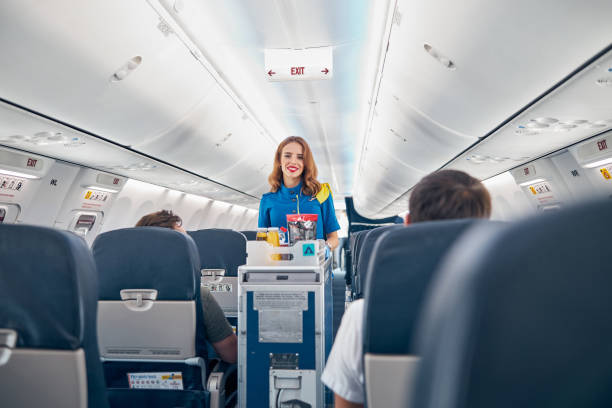
Make use of Spotify Premium offline.
- Pros: Allows you to listen to music without paying for expensive in-flight internet.
- What you need: Subscribe to Spotify’s premium tier.
Putting on headphones and tuning out the world is a systematic approach to unwinding when in flight. Music is a simple way to pass the time, especially if you suffer from motion sickness and find reading or bringing a laptop too much of a nuisance. You can avoid the high cost of in-flight Wi-Fi when you have Spotify Premium and listen to music offline (which is usually terrible anyway). Tap “Home,” “Settings,” then “Playback” to access your offline music library. Turn on the offline mode. You may even bring your music into the plane by downloading playlists ahead of time. To begin downloading, click the “Download” button.
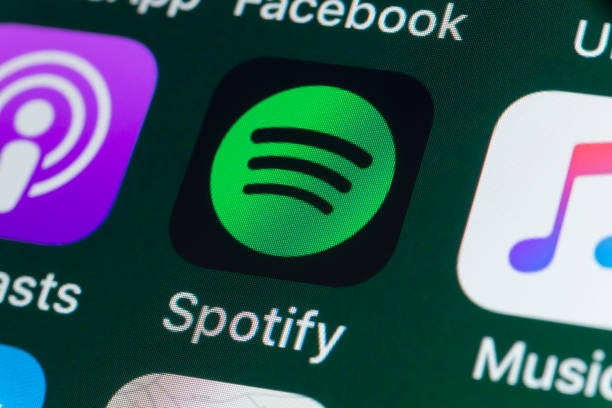
Those who are unexpectedly removed from a flight are entitled to compensation.
- Pros: Brings in a lot of money in damages.
- What you need: Knowledge and assurance without cost.
Peculiarly, it’s frustrating to arrive at the airport to learn that your flight has been changed or canceled. On the other hand, it could end up helping you. While some travelers may just accept the airline’s word at face value, a TikTok attorney claims that you deserve more than just a complimentary supper on your alternative journey. How long you have to wait determines whether you get your initial payment back four times. There are, of course, some caveats, but this isn’t something that airlines often tout. It’s something to consider before your next flight
